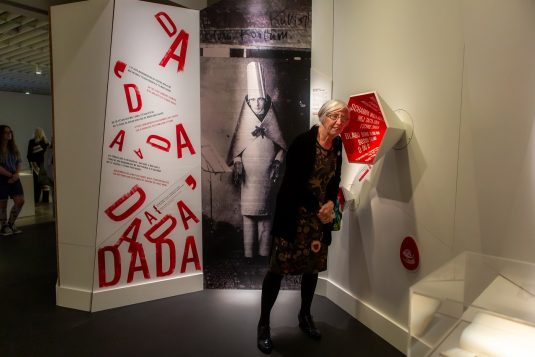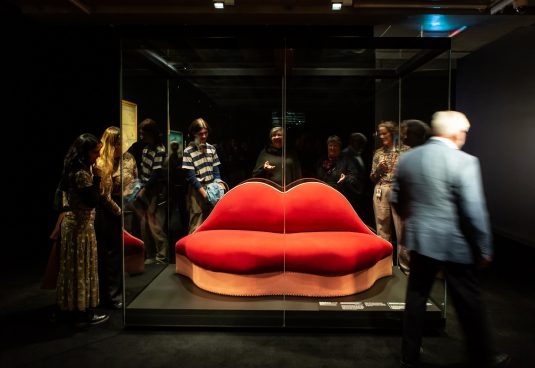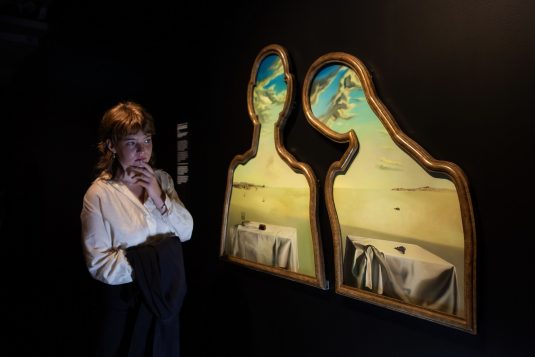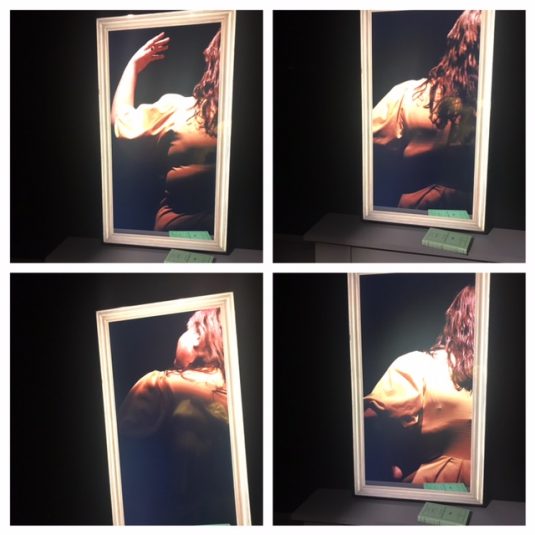Things are getting surreal at Te Papa
We might be stuck in New Zealand for a while, but that doesn’t mean the world can’t come to us (especially if they’re rich, apparently). That’s the cool thing about the new exhibition Surrealist Art: Masterpieces from Museum Boijmans Van Beuningen
He Toi Pohewa: He Toi Marupō o Muhiama o Boijmans Van Beuningen. You’ll get a slice of Europe last century and get to get out of the wind of Wellington all at the same time.
The exhibition steps you through Dada first, which was a reaction to the first World War. When things are pretty shit, it’s natural to want to escape into the dreamy and fantastical, right? I think we all experienced that in 2020. Many of the Dada cut & paste abstract journals on display seemed familiar to me – expect I knew them in the ’90s as zines. It was interesting to see the pieces with a more contemporary eye – does a figure with soft “feminised” hips and a penis still seem as shocking now that the Western world is finally waking up to the fact that gender is not binary?

But I felt the curation could have guided us a little more for the current context. If the Mae West sofa was originally considered shocking for the art of sitting on lips, what does it mean when it’s on display in a country where the head is considered to be tapu and everyone knows you don’t sit on tables or kitchen benches?

Or in the case of the Margritte Mirror digital replication, where you see the back of your head when looking straight in to a mirror, how can that be reinterpreted for the age of selfies?
And then what does it mean when I take photos of it taking images of me and share them here?
That’s not the only interactive part of the exhibition. The surrealists were obsessed with dreams, so you’re invited to write down one of your own and file it away in the card catalogue. I was there the day the exhibition opened so the catalogue was empty, but I wonder if reading about other people’s dreams would be as dreary as listening to them can be.
There’s a screened-off room full of the more risqué pieces – a Venus in bondage, a little nudity, a film that was shocking in the 1930s. Legends of Tomorrow fans will even discover Gary’s haunted nipple – perhaps those wacky time travellers are what inspired Duchamp’s Please Touch.
As the most famous Surrealist artist, Salvador Dali is at the centre of the exhibition, both metaphorically but also physically, with his four of his dreamy landscapes in their own circular enclosure.This is where I really must recommend that you try to see the exhibition at a quiet time. Take an extended lunch break if you can, or go first thing in the morning on a weekend before others get up. You’ll want time to sink into his hyper-realistic-but-also-not works, and you’ll want the quiet.

The exhibition took me around an hour to get through, by myself and it wasn’t too empty, but I am a fast reader. But if you can make it to the museum on a quiet weekday not in the school holidays, definitely make sure you take yourself through the rest of the art too, and go and bathe in the light of Tiffany Singh’s Indra’s bow & Total internal reflection. That’s got to be good for your vitamin D levels!
Sureallist Art is on until October 31. Adult tickets are $23.50, and concessions are available. Te Papa and the exhibition are wheelchair accessible and their website lists a couple of quieter sessions for visitors with autism or sensory sensitivities, or living with disability.

